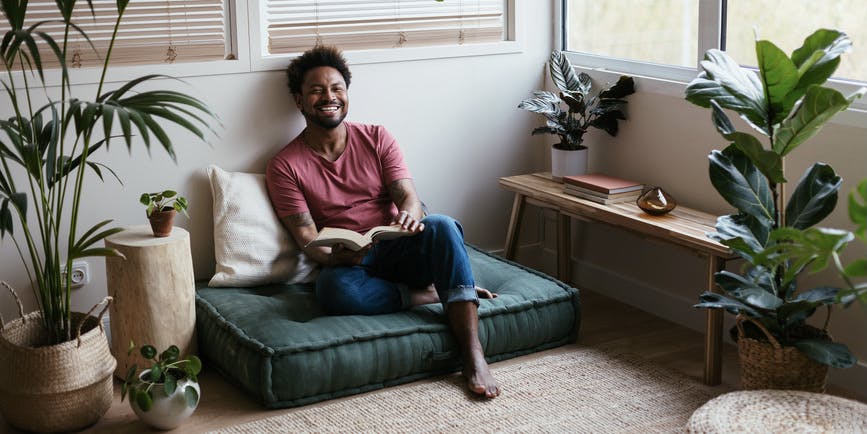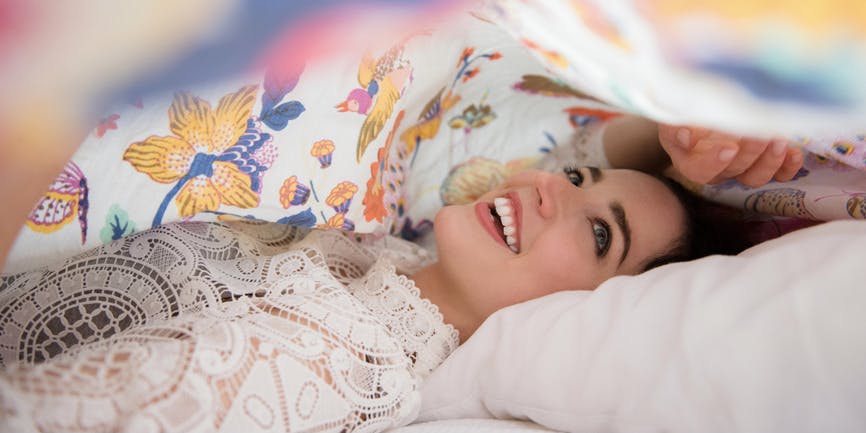
Why are doctors prescribing art as therapy?

Topics
We’ve shared many mental health tools in this newsletter, from outdoor therapy and forest bathing to strategies that distract from chronic pain.
This week, we’re sharing more.
They’ve got science + psychology backing up their efficacy. But they’re also fun, unique takes we hope will shake things up so you can feel even more engaged with the world around you.
We wish you a grounded week. But first, scroll into your…
- The Checkup: feet + brain worms + berroes
- Well, Now! art + 3rd places + kinkeeping
- Healthcare: a new variant + another cyberattack
The Checkup
- These stunning recipes let blackberries shine
- What to do if your feet are smellier than others
- You can make effective toothpaste at home!
- What to know about real brain-eating worm risk
- Like talking to yourself? Here’s why we do it!
- Why are we all self-medicating with supplements?
- Bird flu + Covid unlearning = we’re unprepared
- Um, you may wanna take up backward walking
- Potential pitfalls of running as a Black woman
- Why to progressively overload your workout
A prescription for art?!

Studies show that engaging with art—looking or listening, pondering and reflecting—can lower cortisol levels + reduce stress. The therapeutic effect is proving so fruitful that arts on prescription programs, where doctors prescribe art for therapeutic purposes, are popping up nationwide.
They're currently being studied. But similar programs show that art can ease anxiety + and depression and promote social connection. In one study of 87K conversations, younger people said that engaging with art + opportunities for social connection were the top resources that helped them feel better!
To feel the idea for yourself, look for free events or admission hours at your local museums, theaters, libraries and community centers. Only try things that speak to you, and try to commit at least one hour per month.
Want to ease in? Go to a museum or play alone + enjoy art around others. Bring a friend if you want to experience art with others. Sign up for a class or choir if ongoing commitment excites you.
For more ideas, head to Self.
Why you may need a third place

Our first place is our home. Our second place is our workplace. According to Vox, most of us don’t have a *third plac*e—and that’s a problem.
Third places include bars, gyms, social clubs, stores, community centers, parks, places of worship, cafes and malls—basically, they're our regular haunts.
Casual, comfortable + low-cost, they’re great equalizers. There, we can meet people of different backgrounds and perspectives in low-stakes situations. Passively taking in the scene or engaging in infrequent, unplanned conversations, we progressively create bridging ties—friendships with different kinds of people outside our tight social circles—that psychologists say can help negate loneliness and protect health and overall well-being.
Internet isolation and the divide of residential and commercial spaces are two reasons why most of us don’t have a third space—and our social connections are suffering as a result. Head to the article to learn how third spaces are being reimagined + tips on finding your own.
And if joining a gym or fitness studio could help get you out with others, learn how Dr. B can help you save on a gym or fitness studio membership.
Who's your kinkeeper?

Sociology and psychology researchers define a kinkeeper as a person who executes family traditions, keeps members in touch and performs medical and emotional care. Basically, they're the family glue.
Members benefit emotionally from having a strong sense of family identity and connection. Their physical health may also benefit if the kinkeeper shares family medical history or organizes action around treatment or recuperation.
Despite advancements in gender roles, over 90% of kinkeeper volunteers in one 2017 study were women. Women are still (generally) the producers of family traditions, while men act out the end.
While kinkeepers can feel empowered if appreciated, burnout + stress can result if the role becomes a solo obligation.
Head to the New York Times for more.
Healthcare 411
Medical residents are starting to avoid states with abortion bans, data shows (NPR). For the 2nd year, applications by US medical graduates for residencies in states with abortion bans have declined. General residency applications dropped 4.2% in banned states compared to .6% in states with abortion protections. For OB-GYNs, applications fell by 6.7% compared to .4%. Read the article for details on how this affects the current provider shortage + long-term access.
There’s a new Covid variant. What will that mean for spring and summer? (NY Times). Variant KP.2 (a JN.1 offshoot) makes up more than 25% of US Covid-19 cases. If you got JN.1, you could still get KP.2, especially if it’s been a few months. While it's more transmissible, we can’t accurately track case levels, but hospitalization + death levels are low. Vaccination is still the best protection against severe disease. Head to the article for symptom lists + risks. If you get Covid-19 + are at high risk, start a $15 online consultation to get same-day Paxlovid.
Cyberattack forces major US health care network to divert ambulances from hospitals (CNN). A cyberattack on a nonprofit network of 140 hospitals + 40 senior living facilities across 19 states has disrupted patient records, phone systems + other means to tests, procedures and medications. The cybercriminals used Black Basta ransomware, which involves Russian speakers and has accelerated healthcare attacks, including two in the last few months.
Topics
Sign up for the free Dr. B newsletter for a weekly report on the latest in healthcare + research-based advice for staying healthy and mentally well.
